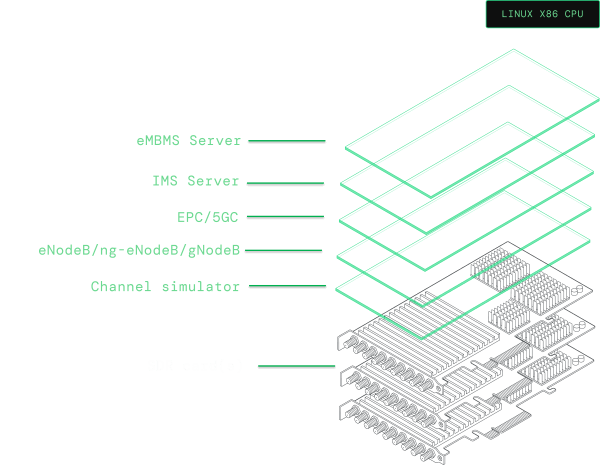ESA and Telesat have successfully connected a Low Earth Orbit (LEO) satellite to the ground using 5G Non-Terrestrial Network (NTN) technology in the Ka-band frequency range, marking a crucial step towards making space-based connections as simple as using a mobile phone. This achievement opens up possibilities that were previously out of reach, as low-flying satellites combined with standardised 5G technology can now support services requiring real-time, interactive connections. The breakthrough could transform how we handle emergency response, provide rural healthcare, and support remote industrial operations worldwide. ESA’s 5G/6G laboratory at its European Space Research and Technology Centre (ESTEC) in the Netherlands successfully connected to the LEO 3 satellite operated by Telesat, a leading global satellite operator. The test was made possible through a Memorandum of Understanding signed earlier this year between ESA and Telesat, which provided access to the LEO 3 demonstration satellite. The LEO 3 satellite serves an important role for low-latency customer applications testing, as well as antenna and modem development.
Telesat’s LEO 3 demonstration satellite was successfully launched aboard Rocket Lab’s Electron rocket on July 18th. LEO 3 was one of seven satellites in the rideshare mission launched from Mahia, New Zealand.
The LEO 3 satellite, built by Space Flight Laboratory (SFL), features Ka- and V-band payloads and will provide continuity for customer and ecosystem vendor testing campaigns following the decommissioning of Telesat’s Phase 1 LEO satellite, which had been in orbit since 2018.
From the beginning, Telesat has taken a deliberate and collaborative approach to introducing Low Earth Orbit (LEO) services. The potential of capabilities and services made possible by LEO has energized the entire space industry. Yet, LEO is still the new kid on the block in many ways.
Customers need to understand how these new LEO services will perform within their networks and across multiple applications. The concept of a LEO capability which is as easy to purchase as any other terrestrial service is an exciting but novel concept.
With a standards-based approach, LEO networks that are certified under the MEF 3.0 Underlay Connectivity Service standards provide seamless integration with telecom networks. Telecom operators can easily understand the capabilities of Telesat Lightspeed and how these software-defined digital services can be procured and integrated into their networks. With such compliance, customers can take advantage of ubiquitous, high capacity and low latency LEO connectivity without the complexities of integrating traditional satellite-based solutions.

Using Amarisoft’s 5G technology, the team established and maintained a stable connection with the satellite as it moved across the sky, from just above the horizon to its peak elevation of 38 degrees and back down again. While similar experiments have been conducted with satellites in geostationary orbits, this marks the first successful implementation of 5G NTN technology with a LEO satellite moving fast with respect to a user on the ground. From enabling remote surgery through reliable telehealth services to supporting autonomous vehicles, the applications opened up by using 5G NTN technologies are far-reaching. The system also offers opportunities to provide connectivity for disaster response teams, keep civilians connected in remote locations, and even enhance in-flight internet services.
The key innovation of this experiment was the use of open standards, developed by the Third Generation Partnership Project (3GPP) – the international organisation that creates telecommunications standards – rather than proprietary waveform technology. This means that mobile devices could potentially connect straight to satellites (a scenario known as direct-to-device), potentially reducing the cost and complexity of terrestrial infrastructures and increasing interconnectivity between different providers. In theory, the technology allows seamless switching between ground-based networks and satellites, ensuring continuous coverage whether you are in a city centre or on a remote mountainside. This work forms part of ESA’s Space for 5G/6G and Sustainable Connectivity strategic programme line, which aims to integrate cellular networks with space-based networks to connect everyone, everywhere, at all times.
The 4G/5G network on your desk
The AMARI Callbox emerges as the ideal solution tailored for the comprehensive testing of 5G NSA and SA, LTE, LTE-M, and NB-IoT devices. Functioning seamlessly as a 3GPP compliant evolved eNodeB (eNB) / gNodeB (gNB) and Evolved Packet Core (EPC) / 5G Core (5GC), it facilitates both functional and performance testing. Empowered by a carrier-grade software suite used in network deployment, the Callbox serves as a pivotal asset for proof of concept in private network deployments.





